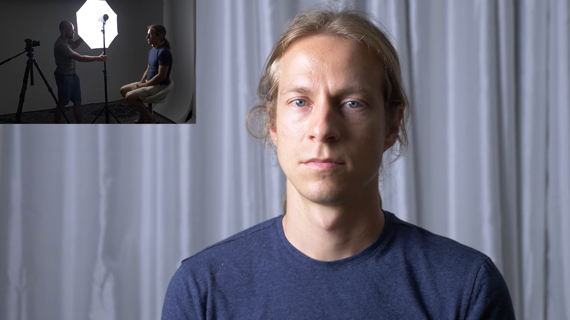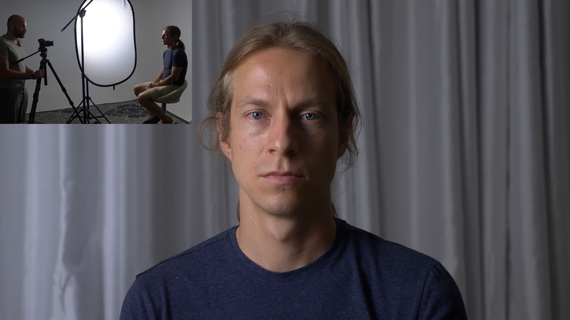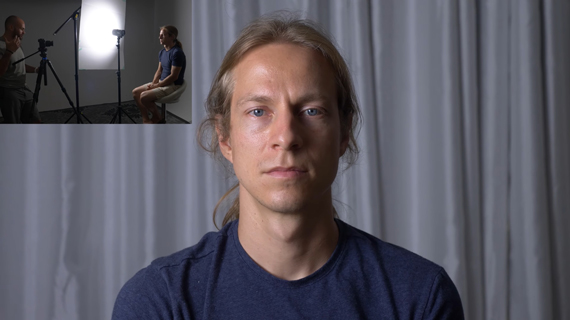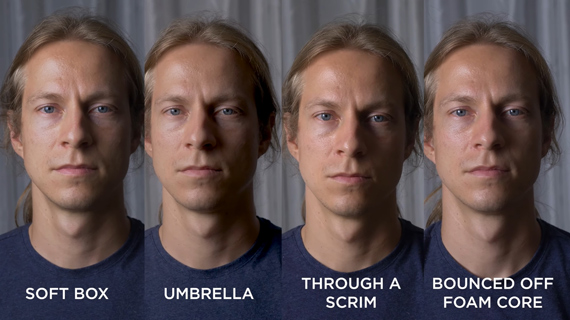Portrait photographers spend a good deal of money when it comes to light modifiers. But do more expensive light modifiers produce better results? Photographer Lee Morris from Fstoppers compares the light from a softbox, umbrella, scrim, and bounce card. Let’s see how they fare:
Softbox
The softbox has to be the most popular and widely used light modifier out there, and that is why Morris uses it as the control for this experiment. The greatest benefit that a soft box has over other light modifiers is its design to contain light. While others tend to spill the light all over the set, a soft box doesn’t.
Morris sets up the softbox so that it is closer to one side of the subject’s face while casting a shadow on the other side:
White Umbrella
Using a silver umbrella creates a hot-spot in the middle that gradually gets softer toward the edges. So, in order to replicate a softbox better, Morris uses a white umbrella next. However, unlike a softbox, an umbrella is circular. Can you tell the difference, though?
One difference is the brightness. Since a softbox has two layers of diffusion, the intensity is reduced. Morris compensates for the extra brightness using a faster shutter speed, and here’s the final image. They look similar.
When using an umbrella, light spills off the edges of the umbrella. Spilled light also plays a part in opening up the shadows more. However, this doesn’t matter if you’re in a large room or an open space.
Scrim
Next, Morris uses a scrim, which is essentially a reflector frame with a translucent fabric. You can point the light toward it from the back to create a larger, softer light source. If you place the light source closer to the scrim, you’ll be creating a harder light. But, if you move it a bit farther, you’ll be creating a softer, larger light.
One major challenge faced when using a scrim is the light spill. Light can spill quite a bit when using a scrim. So much that in Morris’s case, the entire background got brighter. The subject’s face, on the other hand, looks quite close to the previous cases.
DIY Light Modifier
What if you don’t own any kind of light modifier and decide to work on a budget with a DIY solution? To imitate this situation, Morris uses a foam core as a reflector to bounce some light onto the subject’s face. With this setup, you can get a soft light that casts s beautiful soft shadow on the other side of the face.
Here are all the images side by side for comparison:
“No normal person would ever be able to guess what type of light modifier you’re using when you look at any of these images by themselves.”
To conclude, it’s fair to say that it doesn’t really matter what kind of modifier you use. Instead, pay attention to the size of the light source and the distance at which you place it from the subject.
Like This Article?
Don't Miss The Next One!
Join over 100,000 photographers of all experience levels who receive our free photography tips and articles to stay current:











Leave a Reply